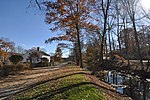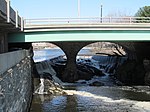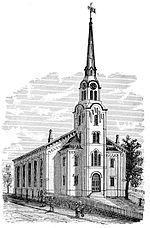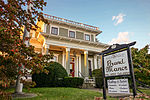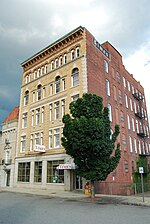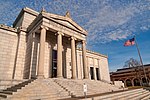Slater Mill

The Slater Mill is a historic water-powered textile mill complex on the banks of the Blackstone River in Pawtucket, Rhode Island, modeled after cotton spinning mills first established in England. It is the first water-powered cotton spinning mill in America to utilize the Arkwright system of cotton spinning as developed by Richard Arkwright. The mill's founder Samuel Slater apprenticed as a young man with industrialist Jedediah Strutt in Belper, England. Shortly after emigrating to the United States, Slater was hired by Moses Brown of Providence, Rhode Island to produce a working set of machines necessary to spin cotton yarn using water power. Construction of the machines was completed in 1793, as well as a dam, waterway, waterwheel, and mill. Manufacturing was based on Arkwright's cotton spinning system, which included carding, drawing, and spinning machines. Slater initially hired children and families to work in his mill, establishing a pattern that was replicated throughout the Blackstone Valley and known as the "Rhode Island System". It was later eclipsed by Francis Cabot Lowell's Waltham System. The mill and surrounding area were the site of early labor resistance, including the first factory strike in the United States, which was led by young women workers in 1824.Slater Mill was added to the National Register of Historic Places and designated a National Historic Landmark on November 13, 1966, the first property to be listed on the register. In December 2014, the mill was added to the newly formed Blackstone River Valley National Historical Park.
Excerpt from the Wikipedia article Slater Mill (License: CC BY-SA 3.0, Authors, Images).Slater Mill
Roosevelt Avenue, Pawtucket
Geographical coordinates (GPS) Address External links Nearby Places Show on map
Geographical coordinates (GPS)
| Latitude | Longitude |
|---|---|
| N 41.8775 ° | E -71.3825 ° |
Address
Slater Mill (Slater Mill Historic Site)
Roosevelt Avenue
02860 Pawtucket
Rhode Island, United States
Open on Google Maps
